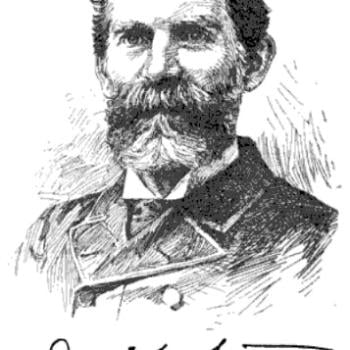In 2012, Paul Tremblay was researching brain injury online and came across an item about Adrian Owen, a British neuroscientist based at Western University in London, Ont. Owen’s work has gained worldwide attention for detecting consciousness in some vegetative patients, a group long thought to be completely unaware of themselves and their surroundings. Using high-tech brain scans, Owen has concluded that a number of these patients are conscious, even though it can’t be detected through standard clinical testing. Tremblay wrote an email; a few months later, he and Jeff flew to London for tests. What the Tremblays didn’t realize then was that Owen’s lab was pioneering a new way to detect consciousness in these patients—one that, coincidentally, involves watching a movie.
In the new study, published in the journal PNAS, Owen’s team describes showing healthy volunteers and two brain-injured patients, including Jeff (who is not identified in the study), a shortened version of a 1961 episode of Alfred Hitchcock Presents called “Bang! You’re Dead.” Each participant watched the movie inside a functional magnetic resonance imaging (fMRI) machine, which measures brain activity. The healthy volunteers’ brain activity was synchronized to the movie, the study says, suggesting they experienced what they saw in a similar way. Even more remarkable, the same patterns were seen in Jeff. (The other brain-injured patient showed no such response.) In other words, Jeff’s brain activity suggested he was engaging with the movie as its plot unfolded, following its twists and turns—he was “consciously aware,” as the paper says, despite his injury. Paul Tremblay took it as good news, although he wasn’t surprised. “It was confirmation for me,” he says. “I’d always believed it.”
To Owen, this represents a new way of identifying patients who have no way to express that they are, on some level, aware. It has implications that stretch beyond the movie theatre, or fMRI machine. If a patient like Jeff, who’s been unresponsive since 1997, can follow a movie, then how do we know he isn’t taking in conversations around him, even discussions about treatment—including if, and when, to end it? It’s a disturbing suggestion, one Owen acknowledges will make many people uncomfortable. “If a patient is able to follow the plot of a movie,” he says, “there is no reason to believe they are not following the plot of their own lives.” . . .
Owen and his team have shown that almost one in five vegetative patients retains some awareness, and can follow commands by fluctuating brain activity, as Routley did. Still, the “playing tennis” technique is far from perfect, he acknowledges: It could be missing patients who aren’t able to picture themselves darting around a tennis court, or simply feel tired or confused at the time of the scan. Watching a movie doesn’t require following instructions. As Owen says, “It’s easy and effortless.” Hitchcock films could be the ideal vehicle. “He’s been called the master of suspense,” says Lorina Naci, a postdoctoral fellow in Owen’s lab, and lead author of this study. “He draws the viewers in.”
Just as the audience in a theatre will jump in unison at a scary scene, past studies have found that movies can drive synchronized brain activity among viewers. According to Naci, this is the first study to look specifically at the brain’s frontal and parietal lobes (important for higher thought and executive processing), and their role in processing a movie. The film used in the study, an eight-minute black-and-white short, seems to work particularly well. In Hitchcock’s “Bang! You’re Dead,” a young boy finds his uncle’s revolver. He loads it with a few bullets and, dressed as a cowboy, tucks it into his holster. As he points the gun in his mother’s face, she assumes it’s a toy; Hitchcock’s audience knows otherwise and, throughout the episode, we can never be sure whether the gun is about to go off.
“Hitchcock uses certain techniques that are extremely important to executive processing. He uses a lot of foreshadowing,” Owen explains. To feel terror as the child waves the gun, the viewer must remember it’s a real gun—and it’s loaded. As this paper notes, understanding the movie’s plot requires viewers to draw on their “stored knowledge of the world” (in this case, that guns are dangerous and kill people), and to imagine what might happen, should the gun fire.
HT: Kathy Schaidle (and see her discussion)












